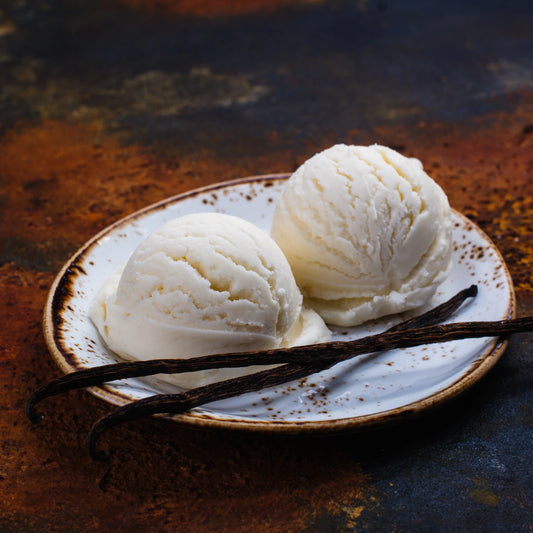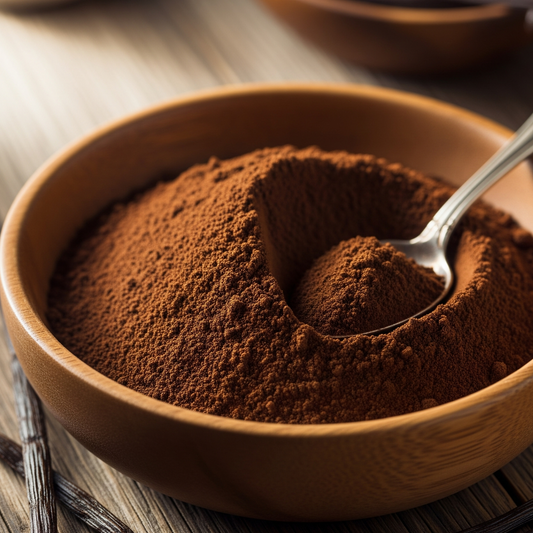
Top 10 Gluten-Free Baking Tips: Avoid Mistakes & Bake Perfectly
Share
Most home bakers, pastry chefs, and even professional chefs struggle to make gluten-free pastries without sacrificing flavor and texture. Whether you bake for dietary needs or are simply experimenting with new ingredients, there's a need-to-know what gluten-free baking is all about and how to avoid common mistakes. This article will guide you through the best gluten-free baking tips, successful techniques, and mistakes to avoid so that your gluten-free bakes are as delicious as their gluten-containing friends.
Understanding Gluten-Free Baking: What Does It Mean?
Prior to getting into the tips and tricks, one needs to know what gluten-free baking is and how it is different from regular baking. Gluten is a protein that is present in wheat, barley, and rye, and it gives dough its structure and elasticity. It makes ordinary bread chewy and enables cookies to adhere to one another. However, ingesting gluten can have disastrous effects on those who have celiac disease or gluten sensitivity.
Therefore, using substitute components that mimic the role of gluten in regular baking is necessary for gluten-free baking. Such gluten-free ingredients, including flours, starches, and gums, serve as binders to maintain texture and structure. But these substitutes differ from gluten, and hence, it is necessary to modify your methods and ingredients.
With that in mind, let's take a glance at the top 10 gluten-free baking tips you can use to achieve wonderful, bakery-worthy results, and what to avoid.

1. Use the Right Flour Blends
Why It's Important:
Gluten-free flour does not perform the same way as wheat flour. A particular kind of flour might not provide you with the structure and texture you need for effective baking. Coconut flour, for example, is absorptive, while almond flour is heavy and dense. Instead, employing a gluten-free flour mix that includes a combination of various types of flour can provide a stronger flavor and texture.
The Hack:
Invest in or prepare your own gluten-free flour blends. Look for blends that consist of a combination of rice flour, potato starch, and tapioca flour for an even texture. For example, if you're making cookies or cakes, a blend containing sweet rice flour (for elasticity) and potato starch (for moisture) is a winner. If you're making bread, use a blend with sorghum flour for added flavor and texture.
You may also experiment with different gluten-free flours based on your recipe. Oat flour is good for cookies, whereas rice flour and cornstarch are ideal for delicate pastries.
2. Add Xanthan Gum or Guar Gum
Why It's Important:
Since gluten-free flour lacks the same elasticity as wheat flour, it's necessary to include a binding agent to give your dough some structure. Xanthan gum or guar gum come in. These gums are responsible for holding the dough together and giving you that chew that you're looking for in gluten-containing baked products.
The Hack:
Most gluten-free recipes will require either xanthan gum or guar gum. As a general rule, with each cup of gluten-free flour add about 1/4 teaspoon of xanthan gum in cookies, or 1/2 teaspoon if you are using it for bread making. You may require more if what you are making requires a lighter texture, such as cakes. This step should never be skipped because it is what gives the final texture.
Don't Overmix the Dough
Why It Matters
Overmixing dough is a major no-no when baking with gluten-free ingredients. The structure-building qualities of wheat flour are superior than those of gluten-free flour, and too much mixing can make the dough heavy and dense.
The hack
Stir your gluten-free batter or dough just until everything is combined. Gluten-free dough should be handled carefully and sparingly, in contrast to wheat dough, which benefits from being kneaded to generate the gluten. This will keep it from getting too rough or thick.
4. Use Ingredients at Room Temperature
The Significance of It:
The temperature of your components can significantly impact the outcome of baking using gluten-free ingredients. A less-than-ideal texture can result from your dough or batter seizing up when cold components (such as butter or eggs) are added.
The trick is to remove all of your ingredients from the refrigerator 20 to 30 minutes prior to baking. This makes it easier to work with your dough or batter and improves the texture of the finished product by ensuring that butter, eggs, and any other liquids blend together smoothly.
5. Try Adding Additional Liquid
The Significance of It:
Generally speaking, gluten-free flour absorbs more liquid than regular wheat flour. Your dough will probably be too crumbly or dry if you use the same amount of liquid as you would in a recipe using ordinary flour.
The Trick:
When making gluten-free desserts, don't be afraid to use more liquid, such as milk, water, or another liquid. A tiny amount (1–2 tablespoons) at a time should be added first, and then more as necessary. Making a moist batter or dough that holds together without being overly wet is the aim.
6. Add Natural Flavors and Sweeteners (like Vanilla) to Improve
The Significance of It:
The finished result may occasionally taste dull or flat, which is one of the difficulties of baking without gluten. Natural flavorings and sweeteners, like vanilla, can help with this. They can help cover up any bitterness in some gluten-free flours in addition to adding sweetness and richness.
The hack
A great way to add flavor to gluten-free baking is with vanilla. It gives depth to cakes, cookies, and muffins and blends well with the earthy, nutty flavors of gluten-free flours. To add more flavor to your baked goods, use pure vanilla extract or even scrape the seeds from a fresh vanilla bean.
7. Refrigerate the Dough for a Better Texture
Why It Matters:
Refrigerating the gluten-free dough prior to baking provides the flours and binders time to hydrate. This prevents the spreading action that results from baking and leads to a better texture throughout the product.
Hack:
After combining your dough, cover it in plastic wrap and refrigerate for a minimum of 30 minutes before baking. This will help to enhance the consistency of the dough so that it retains its shape when being baked. It is especially significant for cookies and pastry doughs.
8. Use Moisture with Eggs or Flax Seeds
Why It's Important:
Many gluten-free recipes lack the moisture that traditional recipes gain from the gluten in wheat flour. Eggs are a great source of moisture, but if you’re looking for an egg-free option, flax seeds work wonderfully.
The Hack:
In egg-free baking, flax eggs (1 tablespoon ground flaxseed mixed with 3 tablespoons water) are ideal as a substitute for normal eggs. When eggs are used, they should be at room temperature to make it easier to blend the dough and keep it moist.
9. Employ a Variety of Leavening Agents
Why It Is Important
Compared to conventional loaves, gluten-free breads may need more leavening chemicals (baking soda and powder). A lighter texture is achieved by using the proper combination, which is particularly crucial for breads, cakes, and muffins.
Workaround: Try combining baking powder and baking soda in your recipes. While baking powder adds lift, baking soda aids in browning. This provides your gluten-free baked goods a light texture and helps them rise correctly.
10. Learn the Temperature of Your Oven
The Significance of It:
The baking time and temperature may vary for gluten-free doughs and batters because they often have a softer texture than the originals. Raw or dry products will come from even little changes.
Trick: To make sure your oven is at the proper temperature, get an oven thermometer. To avoid overbaking and to guarantee that your sweets cook evenly without burning or drying out, preheat your oven completely before baking and think about reducing the temperature by roughly 10 to 20 degrees.
Common Mistakes to Avoid when Gluten-Free Baking
With the above tips in mind, here are the common gaffes to avoid when gluten-free baking:
1. Using One Flour Only
Using one single type of gluten-free flour, like rice flour, will result in a dense and crumbly texture. Always mix it up for the best results.
2. Skipping the Resting Time
Relaxation or chilling the dough is most important in gluten-free baking. Skipping it will result in a spreading dough or one that will not have the right texture.
3. Not Using Bindings
Gluten-free dough without the binding agents xanthan gum or guar gum will lack structure for it to hold together.
4. Insufficient Moisture Addition
Since gluten-free flour draws more liquid, you will have to add more moisture so that your dough doesn't dry out and break.
5. Forgetting Texture Adjustments
Ensure that you make the changes in your recipes based on the type of gluten-free flour. All gluten-free flours are not the same as each other, and you might be forced to change your liquid or fat contents in a bid to achieve the desired outcome.
Bonus Tip: Vanilla Lovers' Guide to Gluten-Free Baking
As a fan of vanilla, you know that vanilla can turn any dessert around. In gluten-free baking, it does the same, contributing flavor, smoothing out the frequently overpowering flavor of certain flours, and richness to your sweets.
For a luxurious touch, try adding vanilla bean paste; for a rich, deep taste, try using vanilla extract. A hint of vanilla will make your gluten-free baked products, such as cakes, cookies, and muffins, even better.
In conclusion
Baking without gluten doesn't have to be scary. You may create delicious sweets that are on par with their conventional counterparts if you have the correct ingredients and methods. You can have light, tasty, and pleasurable gluten-free baked goods by using the proper flour combinations, adding binding agents, and avoiding common blunders. Remember to experiment with flavor enhancers like vanilla and make sure your baking is as gluten-free as possible. Have fun with your baking!


